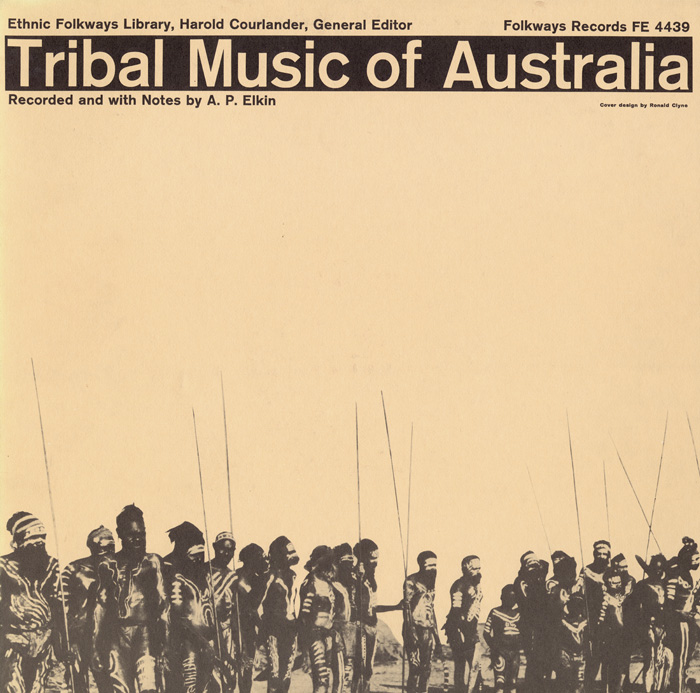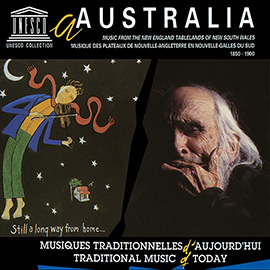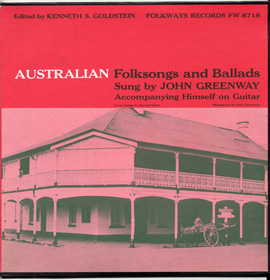Summary
Students will be introduced to the three pieces of Aboriginal music from the Northern Territory of Australia. They will perform rhythms with body percussion and on rhythm instruments. They will listen for particular melodic patterns and show them through drawing as well as singing on neutral syllables. They will act out the story of a song.
Suggested Grade Levels: 3-5, 6-8, 9-12
Country: Australia
Region: Northern Australia
Culture Group: Australian Aborigine
Genre: World
Instruments: Clapsticks, Didjeridu, Voice
Language: Yolngu Matha
Co-Curricular Areas: Art, Social Studies
National Standards: 1, 2, 6, 8, 9
Prerequisites: None
Objectives:
- Listening to instruments, voices, rhythms, melodies
- Reading and playing rhythms
- Learning the importance of music in the Aboriginal culture of the Northern Territory
- Singing a song on neutral syllables
- Reading a world map and Australian map
- Becoming acquainted with the culture of Aborigines in the Northern Territory
Material:
- “didjeridu” fromTribal Music from Australia (FW04439)
- ”djarada” fromTribal Music from Australia (FW04439)
- “djerag” fromTribal Music from Australia (FW04439)
- World map
- Map of Australia
- Rhythm sticks
- Didjeridu (if available); if not, Conga or other deep-toned drums
- Pictures of clapsticks and didjeridu
Lesson Segments:
- “What Do You Hear?: An Introduction to Aboriginal Music of Australia’s Northern Territory” (National Standards 2, 6, 9)
- “What Can You Play?: Deeper into Didjeridu” (National Standards 2, 6, 9)
- “Djarada”: Young Boys Singing With a Songman (National Standards 1, 6, 9)
- “Djerag” Two Songmen with Didjeridu (National Standards 1, 6, 8, 9)
1. “What Do You Hear?: An Introduction to Aboriginal Music of Australia’s Northern Territory”
- Play “Didjeridu” recording with the following questions written on the board (students may need a second hearing before determining what they hear):
- Where in the world do you think this music is from? [Australia]
- What makes you think so?
- What do you hear? [didjgeridu and clapsticks]
- Take answers and find Australia on a world map.
- What do you know about aborigines?
- Give background on Aborigines from liner notes (see at end of Lesson 2)
- Play again to establish that two instruments are playing.
- Identify instruments and show pictures of them
- Talk about instruments from liner notes (see at end of Lesson 2)
- Ask students to focus on the didjeridu pattern and tap it on their legs (this make take two or three listenings to establish).
- Transfer pattern to didjeridu (if possible) and/or ask:
- What else could we do to play this pattern? (Conga drums, beat box, etc.)
- Play pattern on these instruments if available
- Tell students we’ll focus on the clapstick pattern next time.
Assessment:
Are students able to identify where this music comes from? Are students able to identify the instruments? Are students able to play the didjeridu pattern? Are students able to discuss the material in an age appropriate manner?
2. “What Can You Play? Deeper into Didjeridu”
- Play “Didjeridu” as students enter classroom.
- Ask them what they remember about this Aboriginal instrument and Aboriginal music in general
- Review the didjeridu pattern on legs
- Listen to “Didjeridu” recording and focus on the clapstick pattern this time (this will probably take several hearings to figure out).
- If students are able, have them notate the pattern
- Distribute rhythm sticks and practice playing the pattern several times
- Divide class into 2 groups:
- One group plays the didjeridu part
- One group plays the clapstick part
- Switch parts
Assessment:
Are students able to play and notate the clapstick pattern?
Background Information for first two lessons
Aborigines live semi-nomadic life dependent on food gathering, hunting and fishing.
They move around according to the rules of their families and the clans to which their families belong. Moving around is often so that they can take part in ceremonies in which singing and dancing are very important.
Other arts include bark painting and rock painting, wood carving, and chant.
Sacred stories are memorized and passed down. Each group has a Songman, who is the keeper of and composer of the songs and dances. No one can sing his songs without his permission.
The most used musical instruments are the didjeridu and clapsticks. The didjeridu is a hollowed out (often by termites) eucalyptus or bamboo tube through which air is blown.
1500 years old at least – cave paintings in Arnem Land
Mouthpiece: vegetable gum or black beeswax (distinctive odor)
The player blows through the mouthpiece and usually produces only one note, although a really good player (also known as a “puller”) can make a sound about a fourth higher as well. A good puller can also produce an impressive variety of rhythms.
Playing: Puller sits on the ground with the end of the didjeridu on the ground as well. If he stands, an assistant holds the far end of the didjeridu. The puller accompanies the Songman who plays the clapsticks and sings.
The clap sticks are also known as rhythm sticks and are played by the Songman or Songmen.
3. “Djarada”: Young Boys Singing With a Songman
- Play “Djarada” recording and ask students to listen for how many instruments they hear (there are three).
- Didjeridu
- Clapsticks
- Voices
- Give students opportunity to discuss what they heard.
- Let them listen as many times as it takes to establish the instrumentation
- Ask students what this song might be about (see notes at end of Lesson 3)
- Ask students to draw on paper or trace in the air the shape of the melody.
- Do the notes move close together or jump around? (see transcription)
- Ask students to hum along or sing on a syllable (“dah” or “la” or another neutral syllable) with the melody
Assessment:
Are students able to identify the instruments? Are students able to trace and sing along with the melody?
Background Information for first two lessons
This is a love song (djarda) referring to women [djingolo] calling out [bugurungga]
while swimming or bathing [ngororong] in the river.
The words are hard to follow, but the boys sing with gusto while the Songman comes in on a lower pitch. They start singing on a pick up note with the prefix syllable “ing.”
4. “Djerag” Two Songmen with Didjeridu
- Play “Djerag” and ask students to listen for the instruments they hear.
- Two Songmen
- Didjeridu
- How would you describe the men’s singing?
- Are they singing the same thing? (they sing in round at first; if you have the whole track, they sing in a kind of unison after that)
- Play a couple times to establish this
- Put the aborigine words on the board with translation.
- Tell students what this song is about
- Ask them to listen for the words on the board
- For younger students: select some students to act out the song as the Songmen sing it.
- Some students are small fish
- One student is a large fish
- One student is the shark
- Use other students to act as the rocks through which the fish weave in and out to avoid the shark
- Allow time after this lesson for students to discuss the Aboriginal music they have heard in these lessons.
Assessment:
Are students able to identify the instruments? Are students able to describe the singing in terms of harmony versus unison? Are students able to pick out certain words in the native language?
Background Information for first two lessons
This is an example of the Djerag, or seagull songs from northeast Arnhem Land. These songs are about sharks, salt-water fish and birds. This excerpt is about a shark cutting through the water chasing small fish who hide between the stones, and big fish who get away just before his teeth close on them.
The didjeridu puller is quite good in this song which features two Songmen who sing in a round and in (almost) unison.
Listen for these words (put on board with translation and practice saying them)
marawau tjaipila waptuan
[shark)] [jumps] [cleaves]
dorjuwan bandang-a
[jumps] [chasing fish into the rocks]
lindjing-o warogan rerami
[song] [shark] [teeth]
marauwa rurdowan
[shark] [small fish rush away]
wurubowan
[big fish chased by shark]
wirwiriwan dirijuwan
[go round] [jump and run]

Notes on Transcription: Transcribed by Cyndy Nasman and Cary Boyce
- Pitches are not in Western tuning.
- It’s not really in 4/4, but rather more according to the text and phrasing of
what the boys are singing.
- The range and breathiness of the didjeridu make the articulation vague; the sliding around on the beats make it impossible to notate exactly.
Extension: Make didjeridus & decorate in Aboriginal art forms







